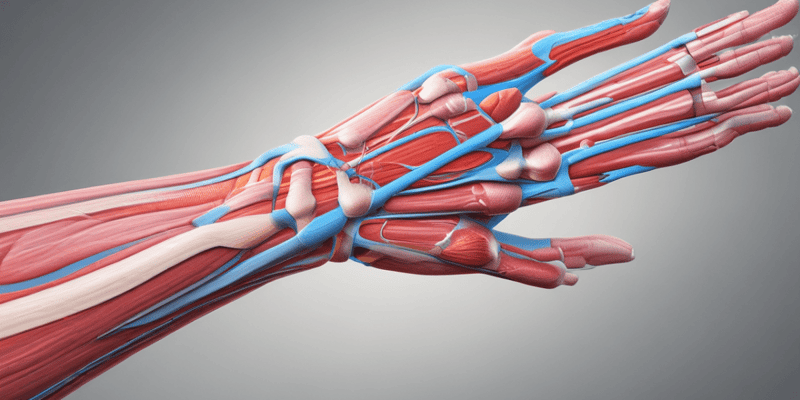12 Questions
What is the main characteristic of a radial connection system?
Single path from source to end user
What is the purpose of a tap in a radial connection system?
To connect the main line to a branch line
Which method involves compressing a metal connector around a wire's conductor?
Crimping
What is the purpose of soldering in wire termination techniques?
To melt solder between the wire and a metal connector
Which type of connector uses a screw or clamp mechanism to compress the wire against a terminal?
Compression-style connectors
In a radial system, how are branches connected to the distribution line?
Using tap or lug connections
What is the main advantage of a radial distribution system?
Minimizes fault identification and isolation
Which connector type uses a spring-loaded mechanism for wire connection?
Push-in connectors
What is a safety consideration highlighted in the text for maintaining electrical connections?
Regularly inspecting and maintaining electrical connections and components
What is the purpose of screw-type connectors in electrical systems?
To compress the wire against a terminal for a reliable connection
Why is it important to prioritize safety precautions in electrical work?
To minimize the risk of electrical accidents
Which type of connector is made of plastic and is used to join wires together?
Twist-on connectors
Study Notes
Radial Connection Systems: Ensuring Reliable Electricity Delivery
The radial connection system, often found in residential and small commercial settings, is a fundamental design for safely and efficiently distributing electricity. This system is characterized by a single path from the source (power plant or substation) to the end user, with branches leading to individual consumers. Understanding the components and techniques of this system will provide insight into how electricians ensure a reliable and safe flow of power.
Electric Connections
In a radial connection system, each branch from the main line is connected to the distribution line through a single connection point, usually a tap or lug. A tap is a device that mechanically and electrically connects the main line to a branch line, while a lug is a strain-relieving attachment that holds the wiring in place.
Wire Termination Techniques
The proper termination of electrical wires at tap points is essential for a reliable radial connection system. Some common techniques include:
- Crimping: A method that involves compressing a metal connector around the wire's conductor to create an electrical connection.
- Soldering: A process that involves melting solder between the wire and a metal connector to create an electrical connection.
- Compression-style connectors: These connectors use a screw or clamp mechanism to compress the wire against a terminal, creating a reliable connection.
The Radial Distribution System
The radial distribution system consists of a main line that branches out to individual consumers, with no return path for electricity. This design ensures that power flows in one direction, from the source to the consumer, making fault identification and isolation easier.
Connector Types
Several connector types are commonly used in radial connection systems, each with its own advantages.
- Wire nuts: These are plastic, twist-on connectors that are used to join two wires together.
- Push-in connectors: These connectors use a spring-loaded mechanism to create a reliable connection between wires and terminals.
- Screw-type connectors: These connectors use a screw mechanism to compress the wire against a terminal, creating a reliable connection.
Safety Considerations
The radial connection system is generally safe, provided that the system is well maintained and components are regularly inspected for wear and damage. However, it is essential to prioritize safety precautions to minimize the risk of electrical accidents, such as:
- Regularly inspecting and maintaining electrical connections and components.
- Ensuring that only qualified electricians perform electrical work.
- Following proper safety guidelines and practices when working with electricity.
Conclusion
The radial connection system is a fundamental design for distributing electricity to residential and small commercial settings. By understanding the components and techniques of this system, we can better appreciate the reliability and safety that it provides. Proper installation and maintenance of electrical connections using tried-and-true techniques are crucial for ensuring a safe and reliable flow of electricity for all consumers.
Explore the fundamentals of radial connection systems for electricity distribution, including components, wire termination techniques, connector types, safety considerations, and more. Learn about the importance of proper installation and maintenance to ensure a reliable and safe flow of power.
Make Your Own Quizzes and Flashcards
Convert your notes into interactive study material.




